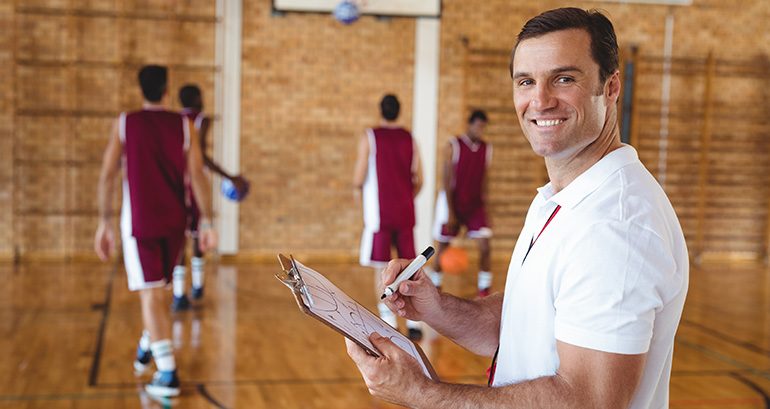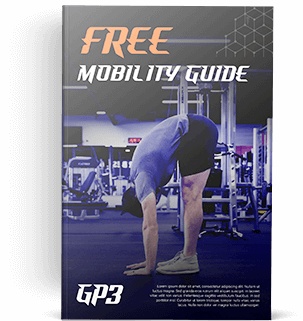Key Points:
- When I was growing up, athletes were encouraged to specialize in one sport from a young age.
- In reality, early specialization makes athletes more prone to injury and burnout, while hindering their overall athletic development.
- Playing multiple sports can even help a young athlete enhance skills in the sport they ultimately choose.
Estimated reading time: 6-12 minutes
Listen to this article on Spotify!
Last year, I wrote a piece called “Things Your Coaches Got Wrong #1.” It discussed something nearly every youth athlete has heard yelled at them when they double over between wind sprints… “Stay up!” Turns out, this advice is completely wrong, and you can read why, right here. And today, like an HBO show with an 18-month gap between seasons, “Things Your Coaches Got Wrong #2” is finally here.
Today, we’re talking specialization.
In short, youth athletes shouldn’t.
This would have come as quite a shock to my teenage self, because when I was a sprightly young footballer in the early 2000’s, athletes were told to pick one sport to focus on (at the exclusion of all others) as soon as they possibly could. Gone were the days of striving to be an All-American in football, basketball, and baseball.
Nope, if you wanted to play a sport at the college or professional level, supposedly you’d need to play it year-round or your development would fall hopelessly behind. Soccer coaches emphasized this particularly strongly. However, this notion is blatantly false.
Hopefully, this viewpoint’s prevalence has decreased in recent years, but I’m not holding my breath. I still remember a story one of the best strength coaches I’ve worked under told me in 2017, where a parent came to him for “baseball-specific and preferably, pitcher-specific” strength training exercises for his son…who was all of six years old at the time.
Isn’t it ideal to specialize early?
Now, you might be thinking, “Isn’t it good to focus on a particular sport from a young age?” After all, engaging with a single athletic pursuit for the entire year will provide more total hours of training and prevent the player from being “rusty” after a long break, right?
In theory, this makes sense, but it falls apart in practice. Why?
It has to do with the human body’s status as an exceptional “use it or lose it” machine. If one puts enough time and effort into a given skill, they’re practically guaranteed to develop it. This applies even more for abilities practiced at a young age. A youthful brain is like a sponge, absorbing and synthesizing information at incredible speeds, while a younger body hasn’t accumulated years of wear and tear, poor posture, and faulty movement patterns associated with the modern Western lifestyle. Overly cushioned shoes, hours of daily sitting, and excessive smartphone use haven’t yet taken their toll.
So, in this way, developing strong movement patterns is kind of like learning a language. Not impossible when you’re older, but way easier when you’re young. Crucially, you’ll only develop the movement patterns you practice.
Every sport requires its players to move in a particular way, which means…
Some movement patterns develop proficiently, while others are completely neglected.
Take soccer, for example.
Virtually every soccer player who participates in the sport for years is guaranteed to have one (or all) of the following:
- Greater strength and mobility of the dominant side’s hip joint and associated musculature (hip flexors and hip rotators)
- Greater strength of the non-dominant side’s knee joint and associated musculature (quads and hamstrings)
- Greater strength and balance through the non-dominant side’s ankle joint and associated musculature (feet, calves, and tibialis)
Such imbalances unavoidably alter movement patterns and competencies. Here’s a quick story to illustrate. In 2017, while working for the same strength coach I referenced previously, I occasionally trained youth soccer players aged 13-16. After working with them for a few sessions, I remember being shocked by how good they were the first time I saw them play.
This was because during our sessions, which were often focused on plyometrics, most of these players struggled to do basic movements like squat jumps and snapdowns. And yet, this had no bearing on their ability as soccer players. At least, in theory. Most of them were incredibly proficient from a skills standpoint, and knew what to do with the ball, but had plenty of room for improvement when moving without it. Surprise, surprise, they were only good at the movements they practiced. This absolutely held them back from expressing their true potential as athletes. Shockingly, they’d likely have been even better at soccer had they been faster, stronger, and more explosive.
This isn’t just true for soccer, however. Baseball players and golfers basically swing exclusively from one side, and many basketball players tend to jump off the same leg a vast majority of the time. Do we really think there aren’t consequences for this?
In a piece I wrote previously called, “Is playing sports actually good for you?” I touched upon some of the detrimental physical effects sports can have on our bodies, but here’s the main point. Honing particular movement patterns while completely neglecting others increases your injury risk. Full stop.
When we’re stronger above rather than below a particular joint, stronger on the left side than the right side, or stronger on the front of the body than the back, we’re asking for trouble. Now, this is somewhat inevitable, and imbalances aren’t a death sentence. However, we also need to work on them more often than…never.
Specialization simply doesn’t allow for this.
When all one’s time is taken up playing one sport year round, and often with a focus on skills and tactics rather than physical development, imbalances and weaknesses worsen. This leads to a further increased risk of injury, and also mental fatigue and burnout.
Both of these outcomes definitely happened during my soccer career. The only other sports in which I participated in an organized fashion were cross country and track…during middle school. And those don’t really count, because the endurance component had such an overlap with soccer, and I didn’t develop any additional skills or movement competencies.
Unsurprisingly, recurrent injuries started around age 14, with the root cause being a suspected case of Osgood-Schlatter’s syndrome. This is a knee condition that often affects growing boys, and it plagued me for much of my sophomore year. On top of that, a hamstring pull here, a groin tweak there, all of this was common. These were blamed on growing pains, but they likely had much more to do with only moving in ways associated with soccer and the imbalances than ensued.
By the winter of my junior year, I was fully burnt-out. I’d become sick of endless practices, long drive times, and a lack of variety inherent to playing the same sport year round. So, I took much of the spring off. While the fall of my senior year was injury-free from what I remember, an unfortunate but severe broken nose suffered during a college ID camp required surgery to fix, forcing me to miss most of my senior spring season.
Injuries continued in college My freshman year, I tore the arch of my left foot, and during my sophomore year, I fractured my back in two places. Injuries would continue to intermittently occur and recur until after I graduated, when I took two very important steps.
First, I took nearly a year off playing to focus entirely on strength and mobility. Second, when I returned to playing, it was typically only two or three times per week rather than five or six. The increased strength, new movement patterns, and decreased playing volume made me much more resilient and athletic, and a better soccer player. If only I’d known this during my formative years! I’m sure many of you reading this have similar stories.
Specialization also has implications for skill development.
By far the worst part of my game as a high school and college soccer player was my prowess in the air. Specifically, I was pretty poor at heading the ball. It wasn’t necessarily the technique…I was perfectly fine at that. Instead, I found it quite challenging to judge the flight of a ball in the air, and my jumping ability was decidedly mediocre. Do you see the problem here? It wasn’t the soccer-specific technique I struggled with, it was the accompanying mental and physical abilities…which I was never taught and we never practiced.
Ironically, if as a child I’d played a few seasons of my at the time least-favorite sport, baseball, I’m sure I would have developed a much better ability to read the flight of an airborne ball.
On top of that, let’s say I played basketball or volleyball in the winter, my jumping abilities would have automatically improved. All of this would have combined to make me a better soccer player, despite these activities seemingly taking away from my time on the pitch. Here’s the big takeaway. Had I honed other movement patterns and athletic abilities, I’d have been more athletic, less injury-prone, and more successful at my sport of choice.
The Russians knew this…
It’s often forgotten that the USSR enjoyed an Olympic dynasty for nearly four decades, from the 1950’s to the early 1990’s. Using the “Russian Conjugate System,” their athletes were trained in what’s known as General Physical Preparation, or GPP, from a young age. They honed their endurance, mobility, strength, speed, and explosive power, developing into well-rounded athletes who played a variety of sports. In their late teens and early 20’s, by which time they had built a strong overall base of athleticism, they were finally pushed towards specializing in whichever sport highlighted the characteristics in which they naturally excelled. As a result, the Soviets dominated Olympic podiums for years.
I’ve noticed something similar with my own clients. Even though I no longer work with many youth athletes, something has stood out to me over the years. The easiest clients to train, by far, are those who were gymnasts or dancers when they were kids.
These two activities teach exquisite body control, an incredible variety of movements, and true full-body strength. This tends to stick with a person throughout their entire life.
So, what’s the big lesson from all this?
I’ll make it simple.
First, don’t let your child specialize in a sport until they’re old enough to drive. Maintaining a wide variety of movement patterns, skills, and competencies through puberty will do wonders for their athletic development.
Second, enroll them in gymnastics from age five to ten. They don’t even need to compete, and in fact, I’d recommend pulling them out of the sport before it becomes too serious, unless they absolutely love it, of course. Either way, gymnastics will ensure they develop the neural control and overall body strength that will benefit them throughout their entire lives, even long after they’ve stopped playing sports at the highest level.
And if any of their coaches gives you crap about this, you can remind them that this diversification of movement will make your child even better at the sport they ultimately choose. Plus, they don’t want to end up in “Things Your Coaches Got Wrong, #3” do they? At this rate, it should be out sometime in 2024…
Before you go, I’d love to hear from you. Which sports did you play as a child? If you played multiple, were you encouraged to specialize as soon as possible? Which sport that you didn’t stick with do you think would have benefitted you the most? Reply to this email and let me know!

